Britain is a world leader in marine energy research. But despite strong progress in recent years, widespread commercial-scale wave and tidal generation still seems a long way off. To answer your questions on what marine energy developers have achieved so far and what challenges remain, we’ve lined up three experts:
- Max Carcas, external liaison at the European Marine Energy Centre (EMEC) in Scotland, which provides open-sea testing facilities for a variety of wave and tidal devices;
- Martin McAdam, chief executive officer of Aquamarine Power, the company behind the Oyster wave power device currently being tested with EMEC in Orkney;
- Matthew Reed, engineering director at Marine Current Turbines, the Bristol-based company bought by Siemens last year that has been running its commercial-scale SeaGen tidal stream generators since 2008.
Since waves are produced by the wind, why is it worth developing complex technology that can withstand the harsh ocean environment in order to capture wave power, rather than using the more direct approach of wind turbines?
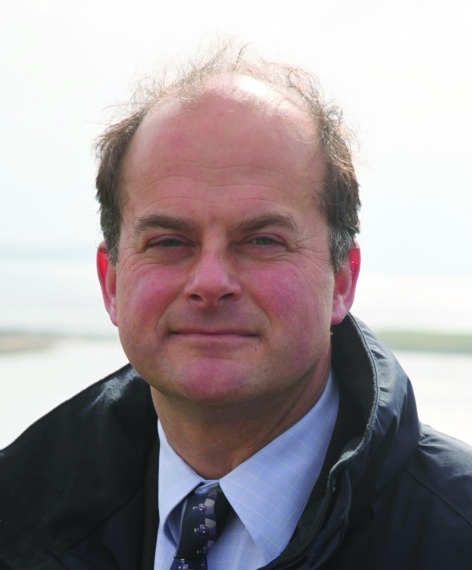
Max Carcas: Wave energy is produced by the time-averaged transfer of energy from the wind to the sea and brings a number of advantages:
• The resource is more predictable. Waves are produced by weather systems that may have occurred a number of days previously and can travel thousands of kilometres without losing energy.
• The resource is more consistent. Because of smoothing and averaging, the resource doesn’t vary rapidly in the same way that wind energy does.
• Wave energy is much more concentrated than wind energy, meaning that wave power projects can require significantly less area to produce the same output as a wind farm, perhaps four to five times less area per megawatt installed.
Martin McAdam: If we are to move to a low-carbon world, we will need to exploit as many sources of energy as we can, and waves have the great benefit that they are often out of phase with the winds that create them. Therefore, you can have wave energy on non-windy days. The UK is a genuine global leader in wave and tidal research, development and deployment. A thriving export-led marine energy sector could drive significant employment and economic activity here in the UK.
What is the typical difference between the average output of a marine generator and its nominal maximum power rating? What approaches are being taken to increase the average output?
MC: Typically it has been assumed that the average output of marine generators — when available to generate — will be around 30 per cent of the maximum rating, although in practice this may vary quite significantly, dependant upon site and resource characteristics. This is known as the capacity factor. The choice of rating is a balance between cost, which will increase as rating increases and the value of the extra energy that could be captured over the course of a year due to the higher rating. In practice, actual output is not only dependant upon design parameters such as the physical properties of a generator and the resource at a site but also on the machine’s reliability and maintainability (collectively known as availability), the efficiency of the power take-off mechanism, ‘cut-in’ thresholds, control algorithms that may optimise energy yield and how efficiently the energy is transmitted into the grid.
Matthew Reed: The record for energy produced in a single day by our 1.2MW SeaGen device is 22.5MWh, which is a 78 per cent capacity factor. This does reflect the highly favourable tidal flow in this location, particularly during a strong spring tide. On an average day, it still generates just less than 20MWh (68 per cent capacity factor). It is likely that more typical sites, that are large enough for commercial farms, will achieve capacity factors around 30-40 per cent, which is similar to wind power. It is possible to improve device economics, and capacity factor, at low-energy sites by increasing the ratio of blade diameter with respect to output power. Of course efficiency improvements also help, and in particular there is a lot to be gained by cleaver blade design.
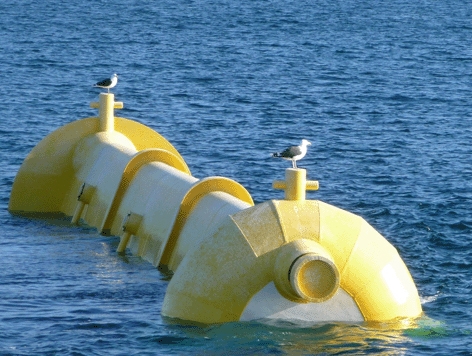
What technical issues are created by the risk that marine generators pose to wildlife and the environment?
MR: In order to mitigate the potential risk to marine mammals during commissioning of the 1.2MW SeaGen device in Strangford Lough and initial generation, marine scientists observed from the turbine deck, complemented with a sonar system that allowed an observer to monitor movement under the surface. Working together, these teams established the typical patterns of behaviour of the marine mammals, which was to approach but keep a reasonable distance. Most of the activity was at slack water when the turbine wasn’t generating.
MM: The Oyster is a simple buoyant flap that pitches backwards and forwards in the nearshore waves. It uses fresh water as its hydraulic fluid, all the electricity is generated on shore and it has no complex or fast-moving parts at sea. We believe it presents no more risk to marine life than a moored boat bobbing on the surface of the sea, and none of the data we have collated to date has indicated any potential adverse effects — indeed, we have photos of seabirds perched on the Oyster, and birds diving around it.
How likely are we to see the emergence of a generic wave or tidal generator design in a similar way to the development of the standard wind turbine?
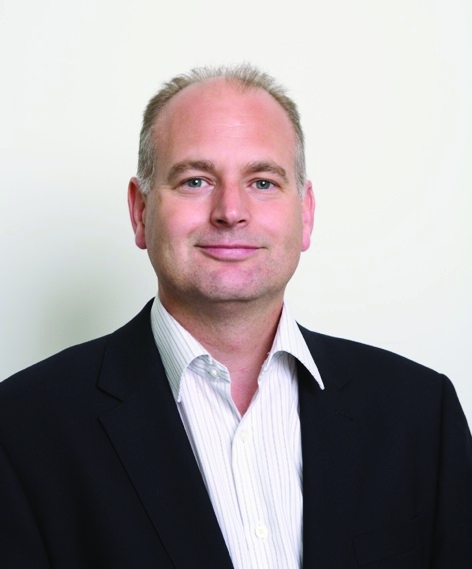
MR: Yes, it is likely. As the industry matures, we will see common characteristics or features used in tidal devices. There has already been some convergence on axial-flow horizontal-axis rotors, as developers increase rotor diameters and methods of reducing rotor thrust and loading will become increasing important, and there will probably widespread use of blade pitching. Foundation types and installation methods are also an area where common approaches are emerging.
MC: It would seem logical that there will be degrees of convergence in time, as has happened in many other markets, but also with continued potential for development — one can think of VHS becoming the standard for video tape versus V2000 and Betamax, but this then being surpassed by DVD and then Blu-ray.
How does marine electricity production change over the course of the year with seasonal weather and the lunar cycle?
MC: Wave energy and hence potential electricity production will be the greatest in the winter months and smallest in the summer months — well matched to when demand is greatest in the UK — and tends to change relatively slowly over periods of hours, rather than minutes. The lunar cycle is unlikely to have a significant impact. Tidal energy is directly influenced by the lunar cycle and can also be affected by weather systems. Tidal velocities typically reach a maximum and minimum twice a day as the Earth rotates on its axis. Maximal tidal velocities will increase and decrease twice per month as the moon orbits the Earth. The overall amount of electricity production per month can be expected to be relatively consistent. Studies have shown that because of the temporally diverse nature of these resources, having a mixture of wind, wave and tidal energy on the system, rather than one alone, could significantly reduce system costs and make better utilisation of grid links as renewables gain a greater proportion of electricity production in the future.
MR: At a typical site, the energy in a spring tide can be double that of a neap. There are a number of cycles affecting tidal strength — all of which are predictable. SeaGen S turbines can commence generation at low-power levels when the tidal velocity reaches approximately 1m/sec. Power increases as the tidal flow builds until it reaches rated power; in the case of SeaGen S 2.0MW, this is at 2.5m/sec. Power is maintained at this level, even if the velocity increases further, by pitching the blades. As the tide falls, the profile of power output is a mirror image. Eventually generation will stop as slack water approaches (approximately 1m/sec).
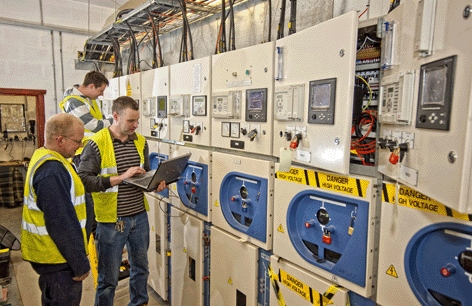
Do wave devices have an upper and lower threshold for the strength of the waves to which they are restricted? What can you do to increase this range?
MC: The lower threshold of operation is dependant upon whether useful energy can be extracted from relatively small waves. This can be increased by designing the system to be more efficient in such a way as not to compromise efficiency in higher sea states and without excessive cost. While there are very high energy levels in large waves, it would usually not make economic sense to absorb and convert all of this energy because the occurrence of these waves over the course of the year is such that they would contribute little to overall energy yield.
In terms of survivability, an upper design threshold will be set, as for offshore oil and gas platforms, considering an extreme but statistically low probability event such as a ‘100-year’ wave that the system should be designed to survive with appropriate factors of safety.
MM: Oyster can generate power in waves around 1m high and power generation increases steadily with wave height up to about 6m, where it levels off. One of the great benefits of our technology is that it will continue to operate, even in severe storms. Oyster is a buoyant flap that pitches back and forth in nearshore waves. It ducks under the biggest waves, which means it can operate in all weather — with no need to shut down or use complex control systems. Oyster is located in the nearshore area at depth of around 12m. At this depth, we avoid the very highest waves, which break before they reach the machine.
The government estimates wave and tidal could provide between 30GW and 50GW of installed capacity — up to 20 per cent of current electricity demand. How much do you realistically think we will get to?
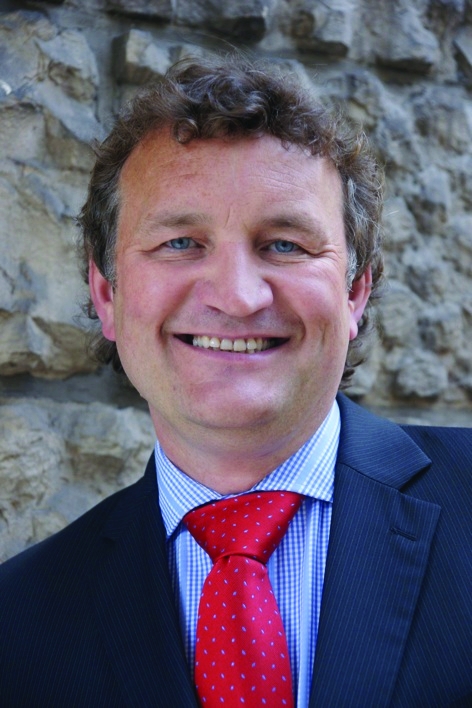
MM: With the correct support, I have no doubt we can generate significant gigawatts of marine energy. Deployment will be very modest between now and 2020, but with the correct support we could see significant increases in deployment in the mid-2020s onwards. The industry needs to achieve a critical mass as this will be the only means to achieve cost reductions leading to commercially competitive technologies. Two decades ago, many forecasts for onshore wind were criticised for being overly optimistic. But looked at today, they completely underestimated what has subsequently unfolded.
MC: Twenty per cent of current electricity demand would equate to around 70TWh per year of electricity. It is indisputable that the total resource is much larger than this, perhaps by a factor of 10 or more; if Ireland was also included, it would be an even larger number. What proportion of the UK’s electricity demand will realistically be met in the future by wave and tidal energy will depend upon the choices that we make today and the importance we place on accessing this unlimited, indigenous, clean source of energy versus the alternatives that may be finite, polluting or have little economic benefit to the UK.
To what degree is the spread of marine energy being held back by a reluctance to invest in the sector, rather than its inherent high costs and complex engineering?
MM: To some extent, these issues go hand in hand. A single full-scale ocean energy prototype can cost in excess of £10m, and the only way the industry can innovate and test various iterations of new technology is through bringing in significant private sector investment. The industry has been very successful in doing this to date. But we are now at a crucial juncture where the next stage of development will require tens of millions in order to install the first small farms of three or more devices. There are many other places these major industrial players could invest, and these investors require a clear signal from the UK government that it will support the wave and tidal industry through until the next decade.
MC: While ‘clever’ engineering is required for marine energy, the systems are not necessarily unduly complex compared with others that are routinely used in our day-to-day lives.
Equally, while costs of initial small wave and tidal projects are high on a per-megawatt basis, they are tiny in absolute terms. Nonetheless, investment in all areas has seen a marked decline
in the UK since the credit crunch. If correctly implemented, the proposals for Electricity Market Reform can help to encourage further investment.





Red Bull makes hydrogen fuel cell play with AVL
Surely EVs are the best solution for motor sports and for weight / performance dispense with the battery altogether by introducing paired conductors...